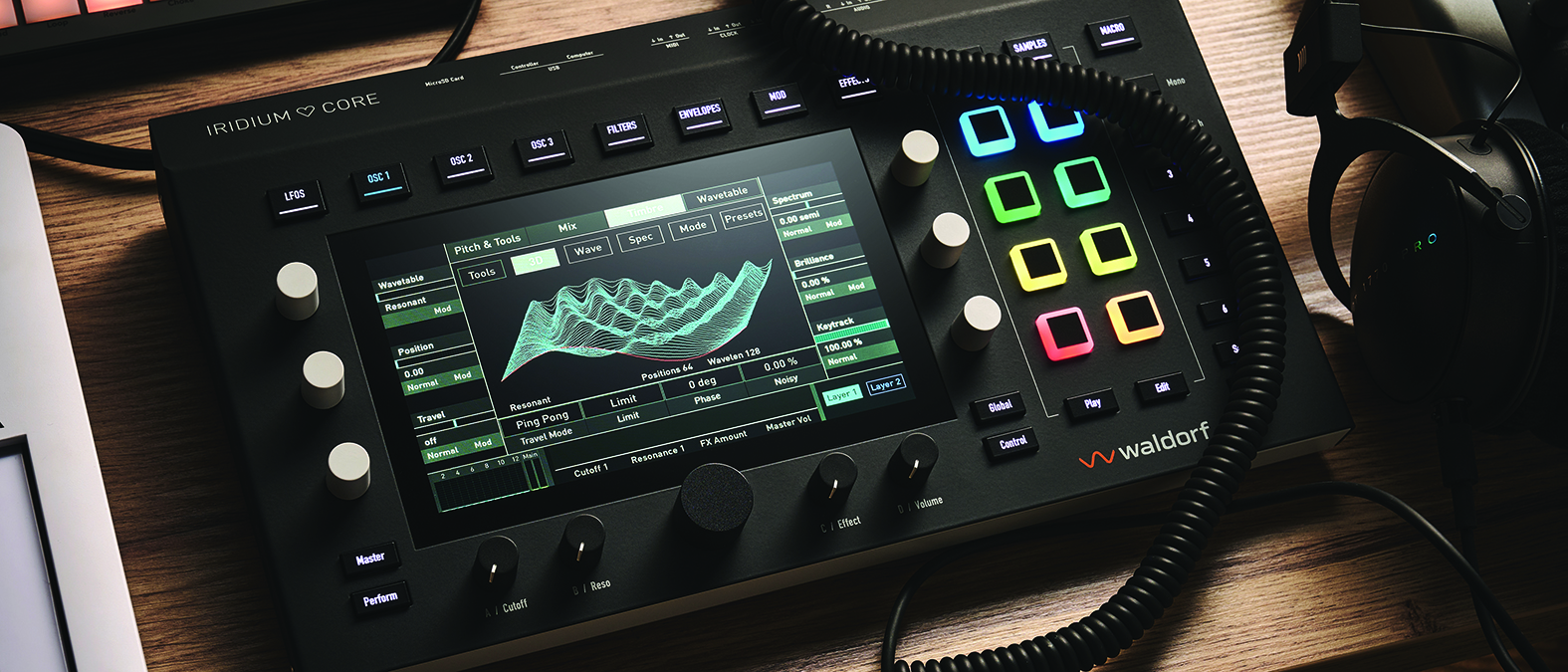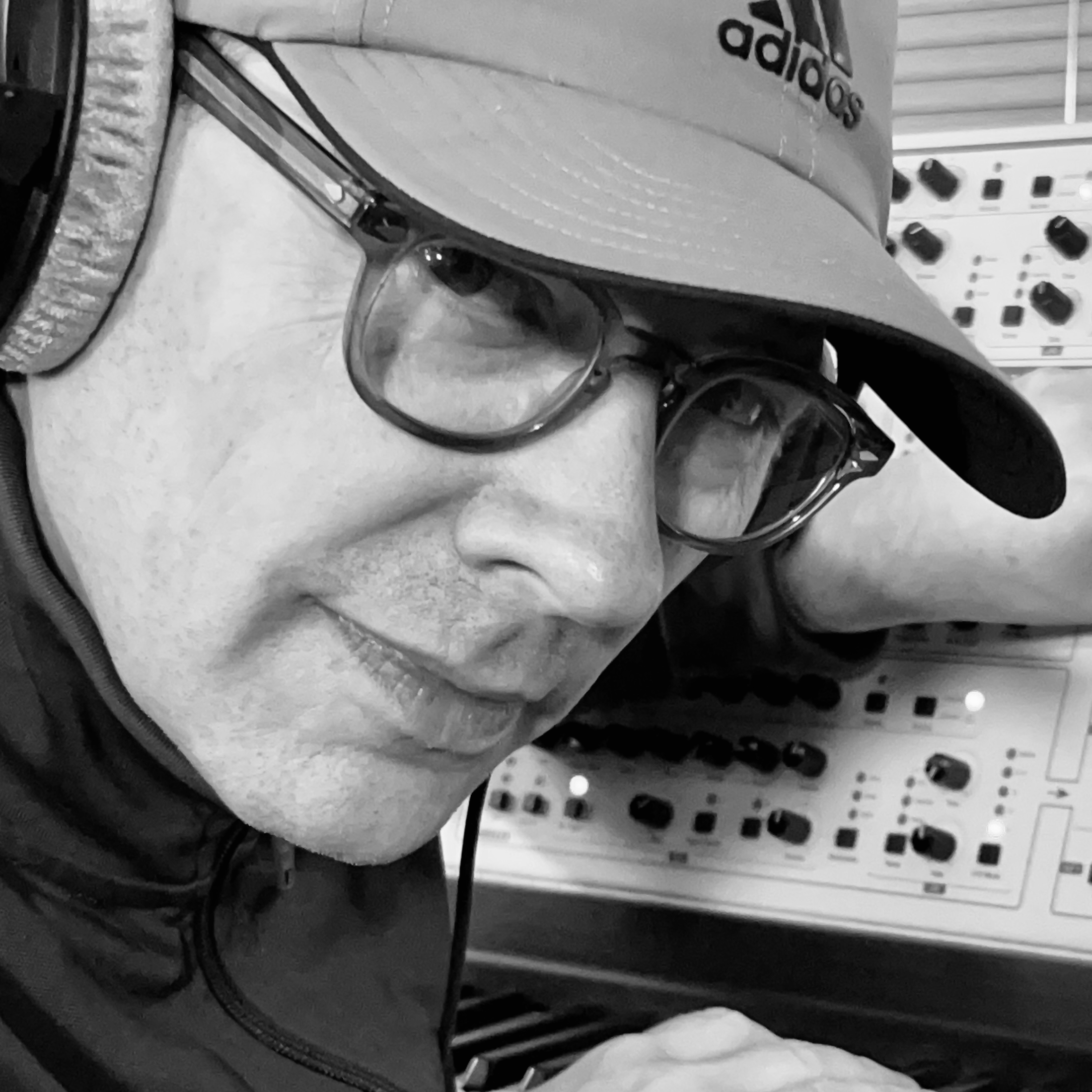MusicRadar Verdict
Undoubtedly one of the best sounding and versatile synthesizers to appear in recent years. The compact form factor of the Core will be an enormous hit with desktop producers.
Pros
- +
Superb-sounding, employing a very capable, versatile synth engine.
- +
The touchscreen is totally engaging for the purposes of programming and sound design.
- +
Despite its desktop designs, it’s laden with useful performance features.
Cons
- -
You have to compromise on the number of available pots and controls.
- -
In this smaller form, OS navigation is a little more challenging.
MusicRadar's got your back
Waldorf Iridium Core Desktop: What is it?
A few years ago, Waldorf created one of the biggest buzzes in the world of hardware synthesizers, with the Quantum. A resplendent, five-octave synthesizer, bedecked with more pots than you could shake a stick at, it also featured a generous touchscreen at the heart of the control panel, making programming and sound creation a total breeze. However, what set the Quantum apart, from the more traditional analogue fare, was its versatile and extraordinary synth engine, encompassing virtual analogue, sampling, granular, and the welcome return of wavetable. As Waldorf is the company that rose from the ashes of PPG, who effectively invented wavetable synthesis, this felt like a groundbreaking moment for the contemporary age.
Since then, Waldorf has introduced several products which present the ethos of the original Quantum, in more affordable, smaller packages. The Iridium Keyboard adopts a 4-octave form, while the original Iridium occupies a relatively large desktop box.
This fully explains the rationale behind the new Iridium Core; by comparison to its larger siblings, it’s pint-sized, but very tidy. The unit is housed in metal casework, festooned with a number of buttons and pots, which ooze quality. Waldorf has maintained the beautiful touchscreen, with six infinite potentiometers, aligned as three on either side.
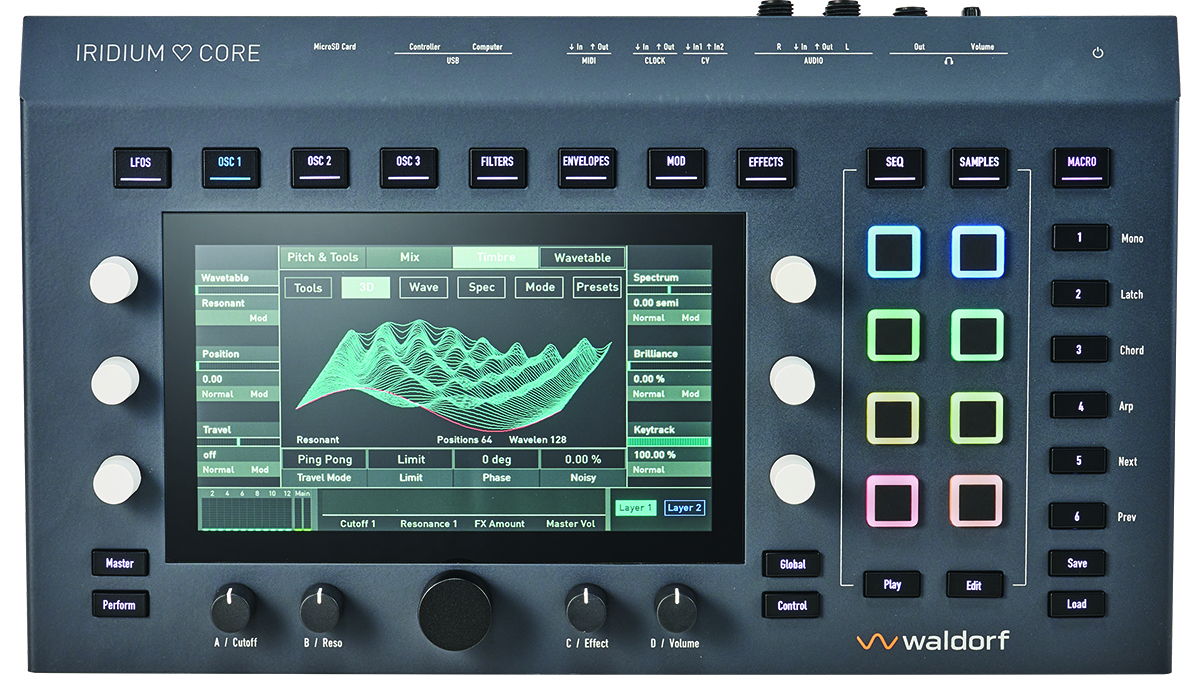
Across the top, we have immediate access to all of the main synthesis sections, with additional buttons/pads located on the right. Eight of these can be used for playing and triggering, with a further six user-assignable Macro buttons.
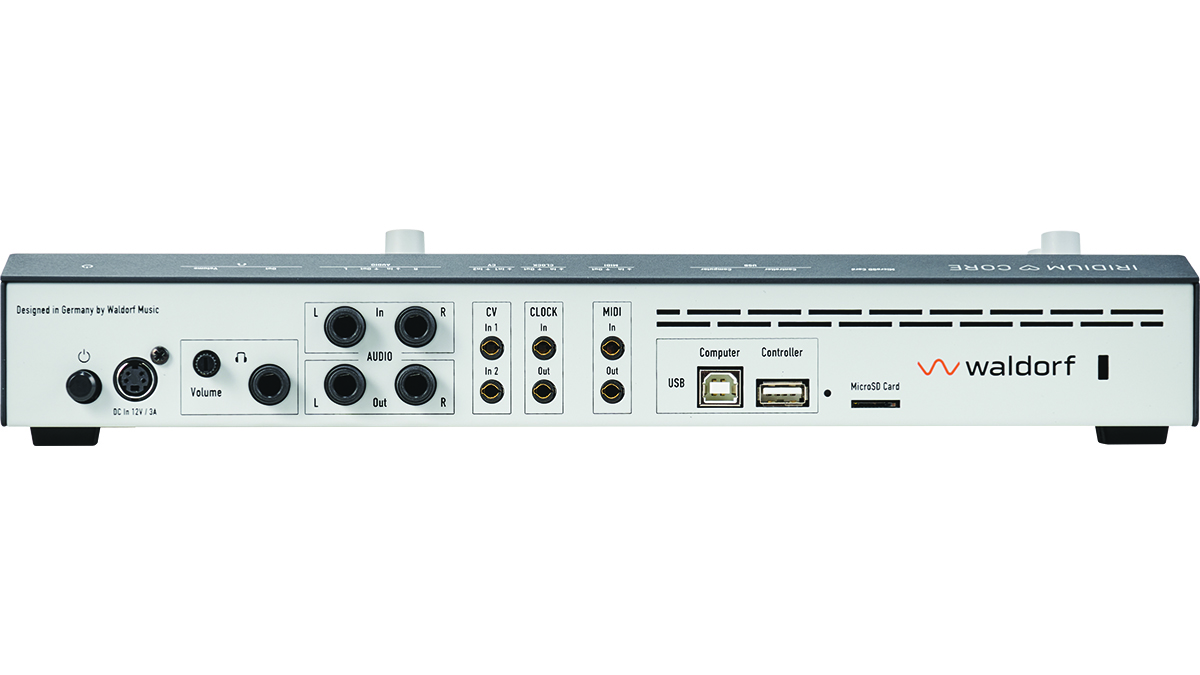
Waldorf Iridium Core Desktop: Performance and verdict
We must take a moment to re-visit the extraordinary Iridium synth engine. The architecture of the Iridium Core is identical to the larger models, providing 12-note polyphony, which begins with three oscillators per voice. These are all identical in their substantial flexibility. Within each oscillator, you can choose which method of synthesis you wish to employ, drawn from five very different synthesis modes.
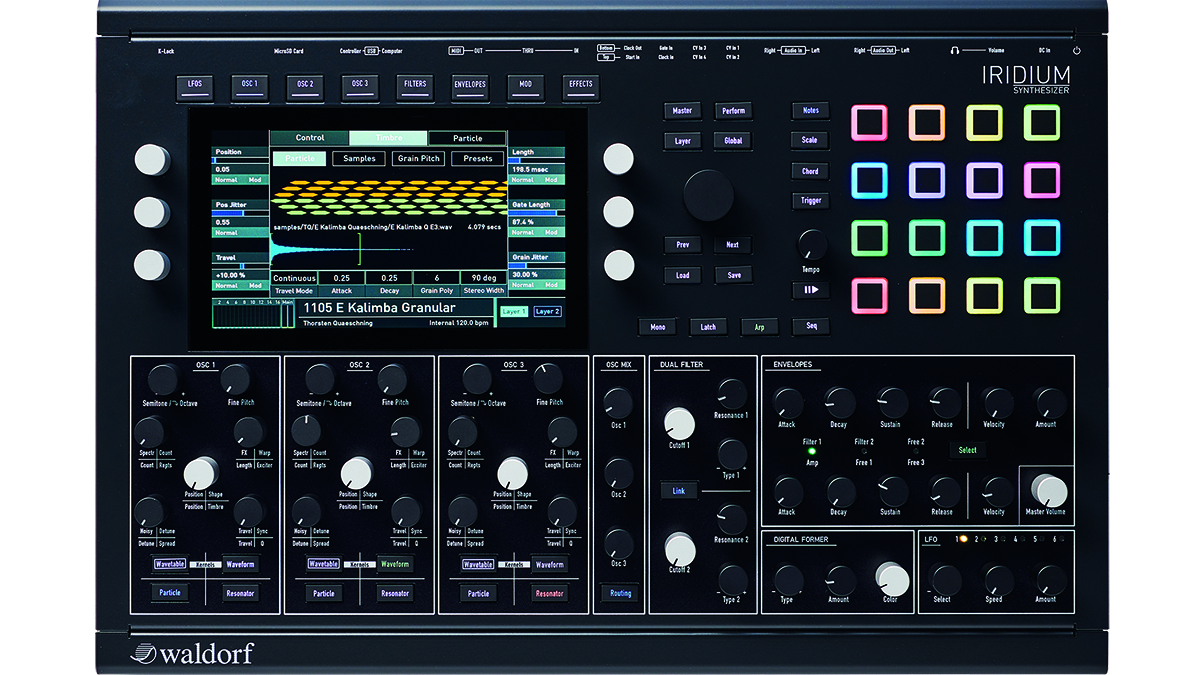
• Waldorf Iridium
The original Iridium, is also a desktop unit, but in a chassis which is considerably larger. As a consequence, not only do you get the same touchscreen with controls either side, but you also get dedicated controls for much of the synth’s signal path. This can make some operations a little bit easier, while allowing for more immediate control of many parameters.
• ASM Hydrasynth Desktop
The Ashun Sound Machines Hydrasynth is another design which is available in many different shapes and sizes. The desktop model provides a very similar architecture to the Iridium, featuring three oscillators per voice, based on an advanced wavetable synthesis engine.
The first synthesis mode is wavetable synthesis; for the uninitiated, the concept of wavetable centres around a complex waveform, which effectively exists in three dimensions. This lets you sweep across the different wave-planes, creating a sense of movement, which is very different from conventional subtractive synthesis. Waldorf has packed the Iridium Core with a large number of wavetables, but there is nothing to stop you creating your own, using freely available third-party software, and importing your sonic creation into the synth, using the SD card slot or USB connection, located on the rear of the unit.
Much like traditional subtractive synthesis, these wavetables can be manipulated by the filter section. This leads us to the virtual analogue element, which performs as you’d expect. Apart from the usual suspects, like sawtooth and square wave, there are a number of intriguing noise modes (eg Geiger).
Want all the hottest music and gear news, reviews, deals, features and more, direct to your inbox? Sign up here.
The Particle synth engine enables playback of samples, which can also be exposed to granular synthesis techniques. There is also nothing to stop you simply using the Iridium Core as a form of sample playback device, and Waldorf generously provides 2.6GB of flash memory, for sample storage, with 2GB of preloaded factory content.
The Resonator synth engine, allows varying degrees of physical modelling. This acts as a beautiful method for blending electronic tones with acoustic blueprints, while also allowing access to each timbres harmonic structure, for the purposes of exciting certain harmonics.
Finally, the newest of the synth engines is the Kernels mode; on the one hand, you can exaggerate a single wave to create thick detuned timbre, like a super-saw, but you can also introduce phase distortion-style modulation, exactly like Yamaha’s DX-based FM synthesis. In fact, it’s even possible to import the old DX sounds, as the algorithmic architecture is the same.
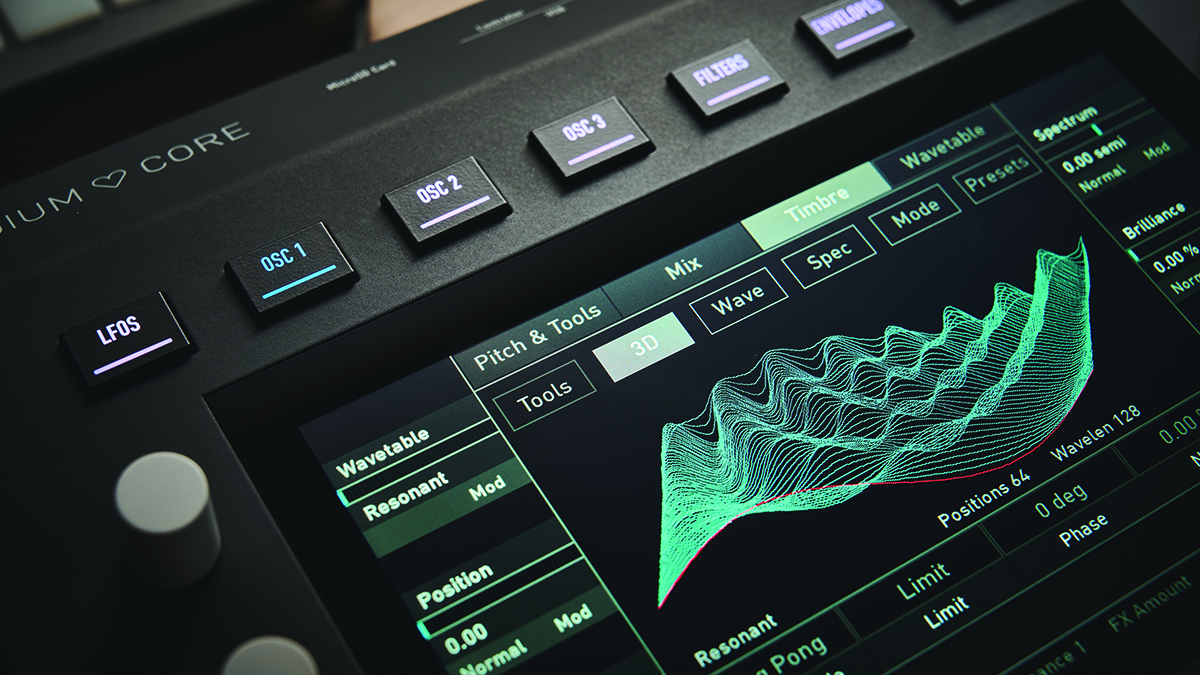
With three identical oscillators, the ability to mix and match the synthesis modes, for the purposes of complementing each other within a patch, really does present quite a staggering amount of sound design and synthesis capability. Some elements, like the virtual analogue component, could be deemed simple, but it’s the ability to combine this simplicity, with the complexity of modes such as wavetable or particle synthesis, that provides a fuss-free method for shoring up a patch’s fundamental makeup, ensuring that you always have the ability to create a sound which is full of interest, content and timbral depth.
The filter side of the synth is entirely digital. This differs slightly from the original Quantum, which offered an analogue filter. However the modelling of the digital filter is so good, there is no way that you’d know the difference. Moreover, there are plenty of filter models to choose from. The first two digital filters are relatively traditional, providing basic models which are drawn from other Waldorf products. Within these categories, you can choose between a number of different 2 and 4-pole filters, in fixed states of low, high and bandpass, or adopt the additional state-variable mode. There is a further filter component, described as the Digital Former, which is arguably far more than just a filter. Apart from another set of filter models, you’ll also find some extraordinarily good effects, like bit-crushing, ring modulation and comb-filtering. These are all exemplary, in their own way, adding vast amounts of colour to the preceding filters.
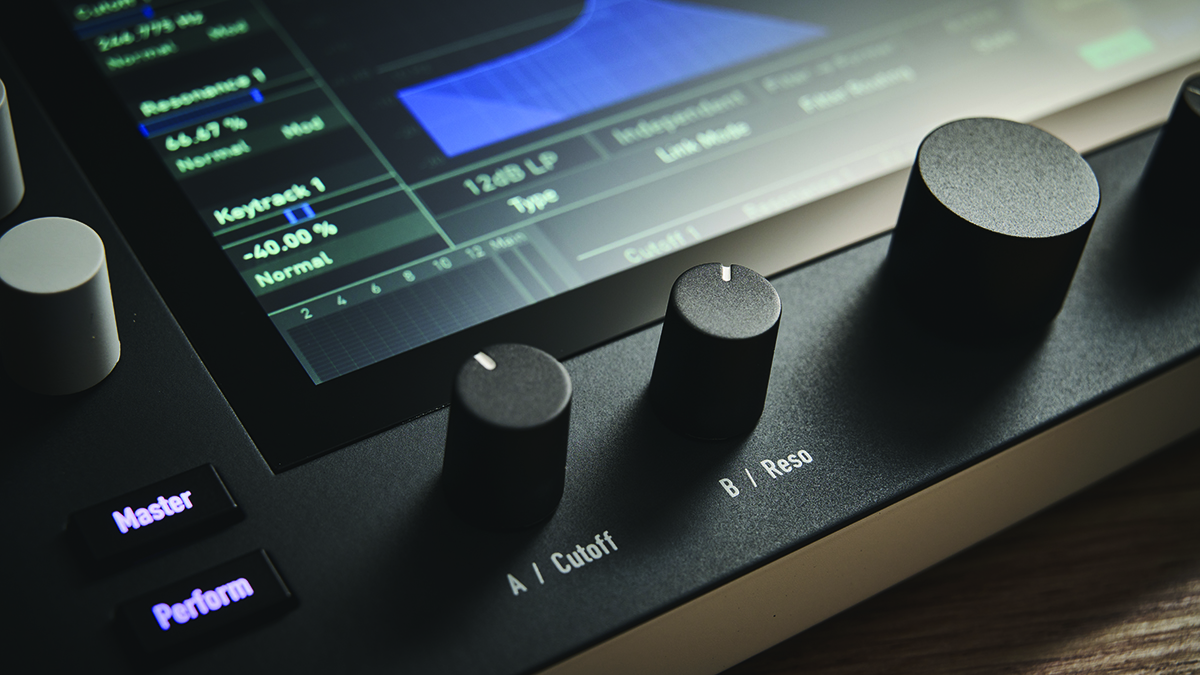
Desktop form
If you’re used to the larger Iridium models or the Quantum, you won’t have too many issues navigating the Core, although on occasion you might find yourself wanting to reach for a pot that isn’t available on this smaller unit. The principal layout and design is identical, but the overarching question is whether or not you’ll really miss those additional potentiometers and controls.
At the top of the control panel, you have buttons for immediate access to the individual synthesis elements, such as oscillators, filter or envelopes. The touchscreen immediately reacts to your chosen area of editing, which makes the process relatively easy. There is no doubt that with a lack of plentiful pots across the panel, the touchscreen does the heavy lifting in this scenario. As well as the aforementioned infinite pots, which are split to align with information on the display, the main singular data pot remains immediately below the screen. This is the ideal method for scrolling through and selecting from larger menus, such as any of the 1,700 included preset patches. With capacity for up to 7,000 patches, you’re unlikely to run out of space to save your sounds.
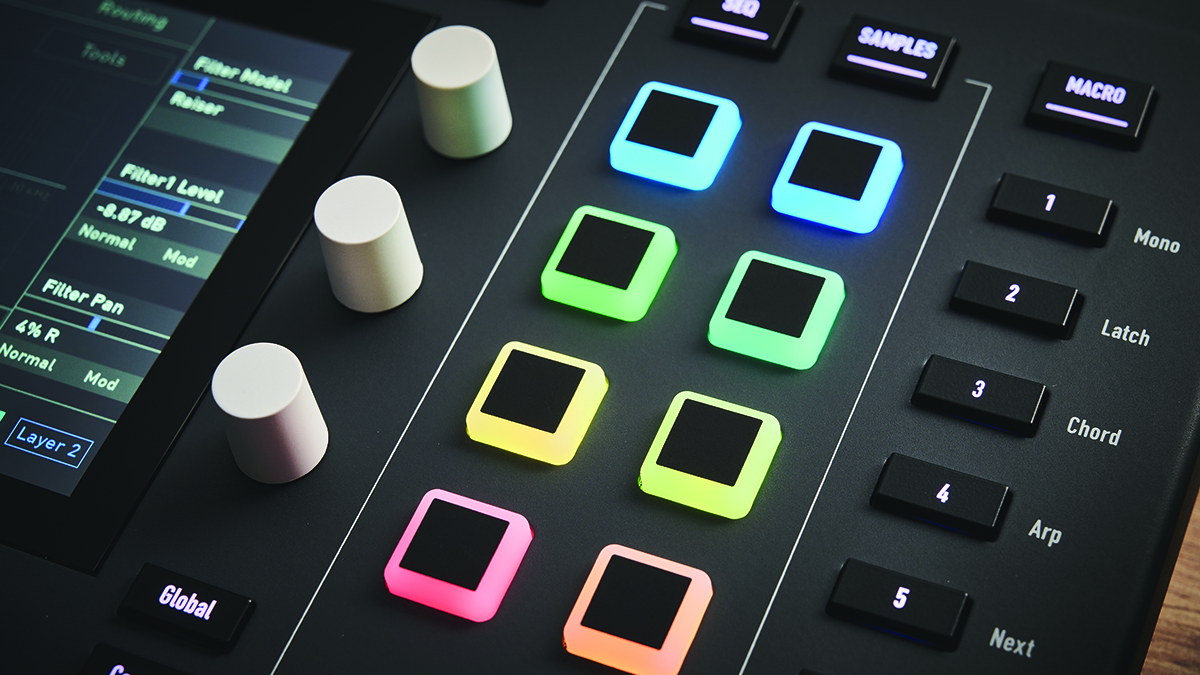
One area where Waldorf has compensated for the smaller space is with Macro controls and assignable pots. The six macros are located on the far right of the panel. Once the Macro mode is applied, you can assign functions to the buttons, for swift access to certain controls, such as glide, transpose, or tuning functionality. The same buttons are also pre-assigned while not in macro mode. This also allows quick access to monophonic operation, or activation of the Arpeggiator.
Within the touchscreen menu, where you assign these macros, you can also assign the functionality of both the performance pads and control pots. The performance pads, can be assigned specific notes; once a pad is selected, the pots located either side of the display make it easy to select an octave, or note name. Meanwhile, the four Control pots that are located underneath the display are preassigned with sensible settings. The first two relate to filter cutoff and resonance, with the remaining two controlling wet/dry level of effect and volume output.
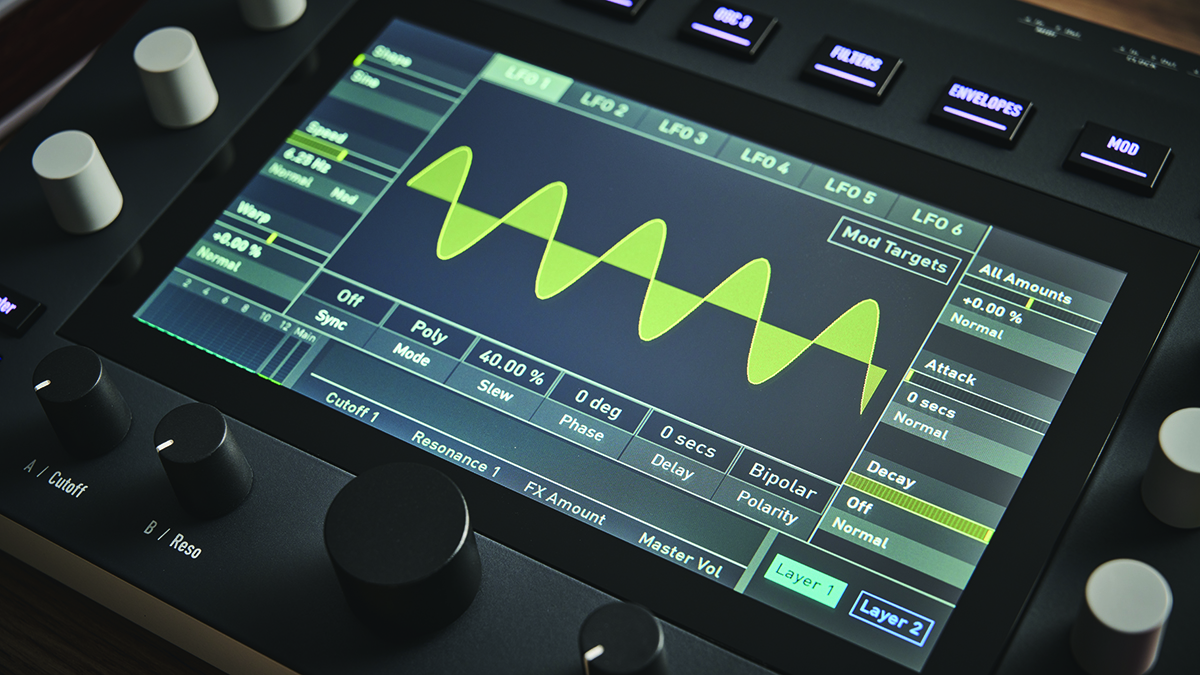
Enter the Modulation Matrix
The Iridium Core provides an exceptional number of synthesis capabilities via an unbelievably engaging interface. The touchscreen, makes editing very easy. The synthesis engines provide the backbone and grunt for the unit, but the big possibilities for modulation routings can really bring your sounds to life, creating movement and texture.
The Iridium Core is equipped with six ADSR envelopes, and another six LFOs, which can be clocked over midi, or to an incoming clock signal for Eurorack. Routing any of these elements, for the purposes of modulation, is an exceptionally simple process; pressing the Mod button immediately reveals the Modulation Matrix. The source and destination are selected on either side, while the applied modulation amount can be dialled in as either a positive or negative value. However, one of the crowning glories in the modulation stakes is the Komplex Modulator, which allows the user to create very complex modulation shapes, right on the touchscreen. Armed with a full 40 modulation slots, you’re therefore unlikely to run out of modulation options very quickly.
Verdict
Due to the size and make up of the Iridium Core, Waldorf encourages you to think about using this device on the move. This is certainly an option, although with a lack of audio via USB, it does make the cable and connectivity quotient quite high, if being used with a laptop while out and about. There is obviously nothing to prevent you from plugging in headphones, but it is quite a heavy unit to lug around, alongside an already considerable laptop. However, its size and make up is really quite endearing. Having had this unit on the desk for a couple of weeks, it’s funny how you find yourself reaching for it on a regular basis.
This new mindset is efficient, albeit you’re more computer and DAW-bound
As a seasoned Quantum user, there is no doubt that the sonic stakes remain exceptionally high, if not identical, to the larger unit. The lack of additional controls doesn’t constrict usage, but it does take a while to conform to the new modus operandi. Once engaged with this new mindset, workflow is quick and efficient, albeit in a slightly different environment, where you are more computer and DAW-bound. With its updatable OS, which will bring new features to the fore over time, the Iridium Core continues to be one of the best-sounding synthesizers of the last few years, providing boundless amounts of creativity in the smallest of footprints.
MusicRadar verdict: Undoubtedly one of the best sounding and versatile synthesizers to appear in recent years. The compact form factor of the Core will be an enormous hit with desktop producers.
Waldorf Iridium Core Desktop: Hands-on demos
WaldorfMusicChannel
Andertons Synths, Keys and Tech
Phable
Waldorf Iridium Core Desktop: Specifications
- KEY FEATURES: I/O: Stereo In and Out via 1/4” TS jacks. MIDI in and out over USB and DIN sockets, MicroSD card slot, headphone output.
- Dimensions: 346 x 200 x 64mm.
- Weight: 2.2kg.
- CONTACT: Waldorf
Roland Schmidt is a professional programmer, sound designer and producer, who has worked in collaboration with a number of successful production teams over the last 25 years. He can also be found delivering regular and key-note lectures on the use of hardware/software synthesisers and production, at various higher educational institutions throughout the UK
